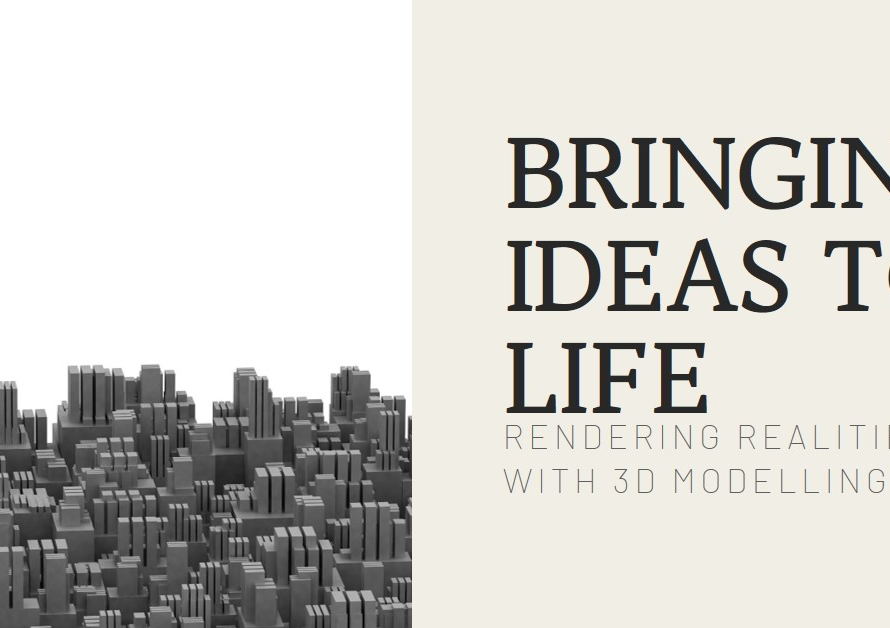
Table of Contents
1. Introduction: The Versatility of Architectural 3D Rendering
Architectural 3D rendering is a versatile tool used across various industries to visualize and present design concepts in a compelling and realistic manner. The introduction sets the stage by highlighting the diverse applications of architectural 3D rendering and its significance in conveying design intent, capturing client imaginations, and facilitating decision-making processes.
2. Residential Projects: Bringing Homes to Life
Residential projects encompass a wide range of architectural 3D rendering applications, including single-family homes, apartments, condominiums, and interior spaces. For real estate developers, architects, and interior designers, 3D renderings play a crucial role in showcasing property designs, highlighting interior layouts, material finishes, and decor choices, and attracting potential buyers or tenants. Whether it’s a modern villa, urban loft, or cozy apartment, realistic 3D renderings breathe life into residential projects, allowing clients to envision their dream homes before construction begins.
3. Commercial Developments: Visualizing Business Spaces
Commercial developments such as office buildings, retail centers, hotels, and corporate interiors benefit immensely from architectural 3D rendering services. Detailed renderings depict exterior facades, interior layouts, signage placements, and branding elements, helping stakeholders visualize the final built environment accurately. Businesses leverage 3D renderings for marketing purposes, investor presentations, tenant negotiations, and interior design planning, creating cohesive and impactful visual narratives for commercial projects of all scales and complexities.
4. Hospitality and Entertainment: Creating Immersive Experiences
The hospitality and entertainment industries rely on immersive and visually captivating environments to attract guests and patrons. Architectural 3D rendering plays a pivotal role in designing hotels, resorts, theme parks, restaurants, and entertainment venues that offer memorable experiences. From luxurious hotel suites and themed attractions to restaurant interiors and outdoor landscapes, 3D renderings convey ambiance, ambiance, and functionality, ensuring spaces meet the expectations of guests and visitors.
5. Educational and Institutional Projects: Designing Functional Spaces
Educational institutions, healthcare facilities, government buildings, and cultural centers require functional yet aesthetically pleasing architectural designs. 3D renderings aid architects, planners, and administrators in visualizing classrooms, laboratories, healthcare facilities, administrative areas, and public spaces with accuracy and detail. Stakeholders can assess spatial layouts, circulation patterns, accessibility features, and design aesthetics through realistic renderings, facilitating informed decision-making and efficient project execution.
6. Industrial and Infrastructure Projects: Visualizing Complex Structures
Industrial and infrastructure projects, including factories, warehouses, transportation hubs, and utilities, often involve complex structures and technical requirements. Architectural 3D rendering helps engineers, project managers, and stakeholders visualize industrial layouts, equipment placements, structural details, and safety features with precision. Renderings also assist in communicating project proposals, construction sequences, and safety protocols to regulatory agencies, investors, and project teams, streamlining project approvals and implementations.
7. Interior Design Projects: Detailing Aesthetic and Functional Elements
Interior design projects benefit immensely from detailed and realistic 3D renderings that showcase aesthetic and functional elements within spaces. Interior designers use renderings to illustrate furniture arrangements, lighting schemes, material finishes, color palettes, and decor styles, allowing clients to visualize cohesive and personalized interiors. Whether it’s residential interiors, commercial spaces, hospitality venues, or institutional environments, 3D renderings help bridge the gap between design concepts and tangible realities, ensuring design visions align with client expectations and project goals.
8. Urban Planning and Landscape Design: Envisioning Sustainable Environments
Urban planners, landscape architects, and developers rely on architectural 3D rendering to envision and communicate sustainable and livable environments. Renderings depict urban developments, public spaces, parks, green infrastructure, and streetscapes with realistic landscaping, lighting designs, pedestrian amenities, and environmental considerations. Visualizations aid in public consultations, stakeholder engagements, zoning approvals, and design iterations, fostering collaborative and informed decision-making processes in urban and landscape projects.
9. Renovation and Restoration Projects: Preserving Architectural Heritage
Renovation and restoration projects require careful planning and visualization to preserve architectural heritage while integrating modern functionalities and design elements. 3D renderings help architects, preservationists, and heritage conservationists visualize proposed changes, historic fabric interventions, material matching, and structural upgrades within existing buildings. By combining historical accuracy with contemporary design solutions, renderings facilitate informed discussions, approvals, and implementations in renovation and restoration endeavors.
10. Conclusion: Harnessing the Power of Visualization


In conclusion, architectural 3D rendering serves as a powerful tool across a diverse range of projects, industries, and design disciplines. From residential and commercial developments to hospitality, education, industrial, and cultural projects, the versatility of 3D renderings enables stakeholders to visualize, analyze, and refine design concepts with precision and creativity. By leveraging advanced rendering technologies, creative expertise, and industry insights, architects, designers, and project teams can create compelling visual narratives that elevate project outcomes, engage stakeholders, and transform visions into realities in the built environment.


